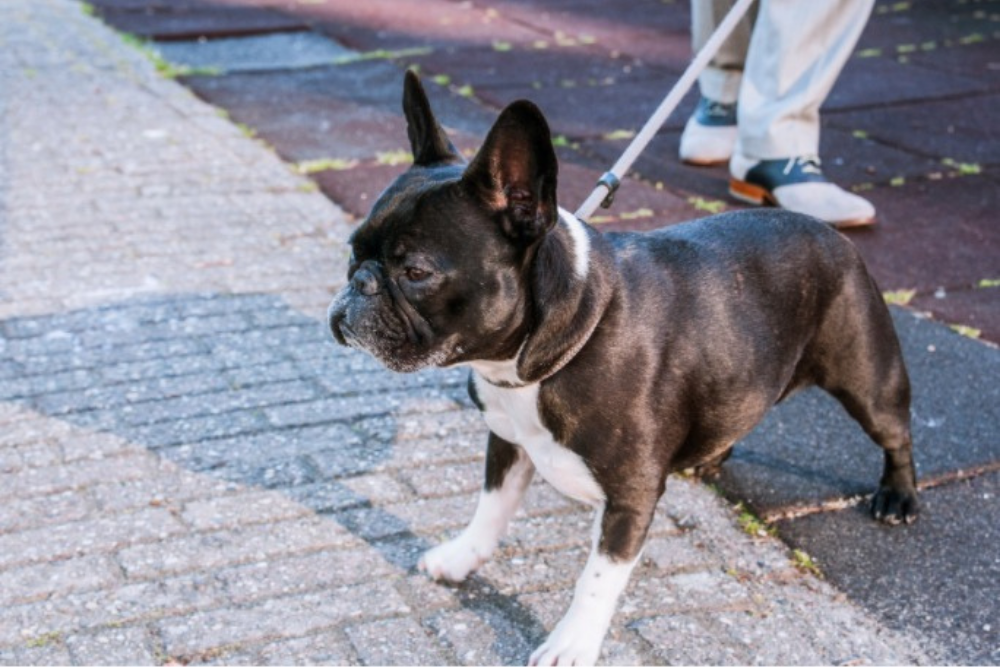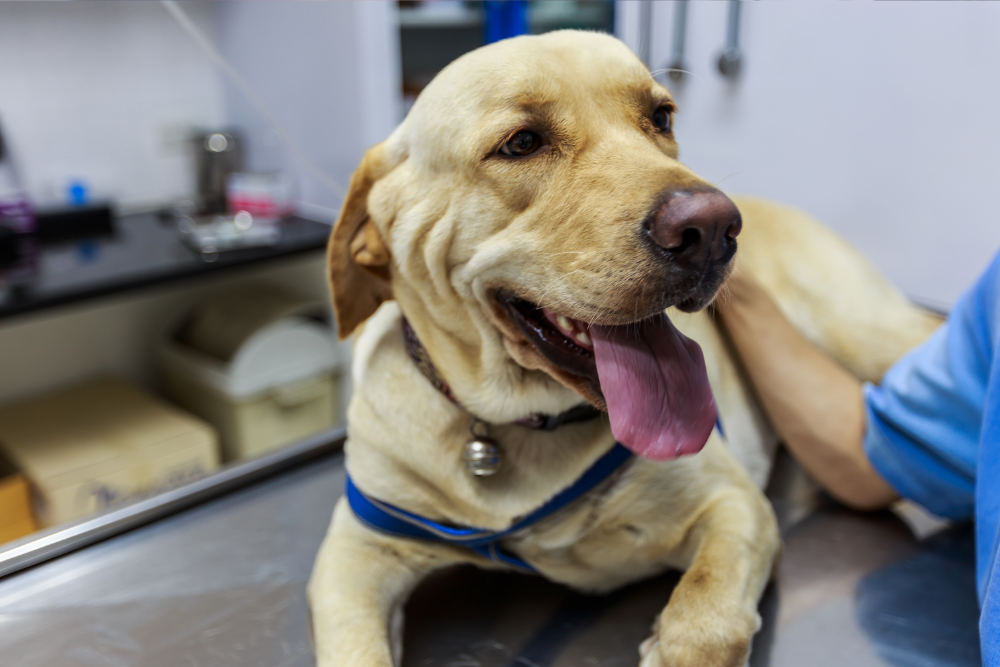My Dog Hates Walks! What Do I Do?
Published January 10, 2022


It’s a beautiful day. The sun is shining. You leash up your dog and start at a brisk pace down the sidewalk. Your neighbors wave and call out your dog’s name. Yes – you and your pup are set to have a nice little stroll.
But then, a few blocks toward the local park, your dog stops walking. They plant their rump on the cement and refuse to budge. You try reasoning with them. Then pleading. Then you give their leash a yank.
Wow! When did they get so heavy?
And why are they refusing to do an activity they used to love? Or, if you have a puppy, why won’t they do this thing dogs are supposed to love?!
Your Dog Hates Walks — Why?
First, check the weather conditions. Is it too cold or too hot for your dog? Put your hand on the ground for a minute, if it is uncomfortable to you, it is probably painful to them.
Then, evaluate if your dog is able to continue walking. A 20-minute walk might be too much for a small puppy or a senior dog suffering from arthritis. Consult your veterinarian.
Beyond these more specific scenarios, dogs can develop an aversion to walking for many reasons. They are a living creature with a character and preferences, after all. Your dog might freeze during a walk in order to:
- Steer clear of situations that make them afraid or stressed
- Sniff something interesting
- Socialize
- Avoid discomfort
- Resist leash constraints (in the case of a puppy)
Now that you know some reasons why your dog hates walks — or at least seems to — let’s talk solutions.
Just because it seems like your dog hates walks, it doesn’t mean that you cannot get her moving again. Below, we’ll go through the most common issues, when it comes to get a lazy pooch walking.
Puppies Need to Be Taught that Walking Is Fun
Your dog hates walks, right? …or is it possible that they’re just not a big fan of their leash?
As humans, we forget that walking on a leash is not natural for dogs. Think about all the limitations it presents for a dog:
- Dogs naturally want to explore and sniff their environment, both for reasons of safety and curiosity – a leash limits their range.
- Humans generally walk slower than most dogs, since we’re bipedal.
- A constricting collar, leash, or harness can feel confusing, especially to a puppy.
For this reason, it’s wise to invest time in gradual leash training. Start your puppy wearing a collar, then a leash, for small periods of time.
Make sure to associate these times with happy emotions: treats, toys, and play. Don’t tug on the collar or leash in sharp or uncomfortable ways. Your pup needs to acclimate to wearing it, and tugging could cause an aversion that sets you back.
Take the location of training in stages. Start inside your home, where your puppy is comfortable. Then, move to the backyard… Down the street… Across the neighborhood.
Check Your Dog’s Collar, Harness, and Paws
If you’ve ever taken care of an infant or toddler, you probably noticed how the slightest physical disturbance, like wet pants, can set them off. When you change them into clean pants, the crying fit ends like magic.
Dogs can operate in a similar way. They’re not halting mid-walk to be stubborn or annoy you – they’re just uncomfortable. And they’re trying to communicate that.
Check their underarms and other points of collar or harness contact for chafing. Check their paws to see if something’s stuck. A little pricking burr can stop some dogs in their tracks.
Calm Your Dog’s Fears
Leaving home can overwhelm some dogs, especially young ones. New sights, sounds, smells, people, and other dogs may provoke anxiety in your pup.
Examine your dog’s reaction and the environment to determine if a connection exists. It might even be an association from a single, intense event. For instance, does your dog seem unwilling to traverse a bridge where a car once backfired? The memory of their fear might linger.


Working on these fears takes a patient process grounded in positive reinforcement. You might visit a spot with treats or a favorite toy repeatedly over time to fortify a new, positive memory.
Sometimes it helps to move the walk to an entirely novel location. Try driving to a park across town or carrying your dog to a new location in the neighborhood. Their fears might not find footing in a new place. And, in your neighborhood, your pup may be motivated to walk just to get home. It’s a start.
Training to reduce phobias and anxiety can be quite challenging for the average dog owner, so don’t hesitate to work with a trainer.
Decide How You’ll Handle Distractions
Is it that your dog hates walks or that you hate stops?
Your dog’s stopping might be a matter of perspective. To them, it’s barely enough time to “sniff their messages” on a telephone pole. But you want to keep going – you have cardio steps to take and a schedule to keep – so you see any pause as a hindrance.
If you don’t want to stop at all during a walk, you might need to adjust your expectations. The goal of the walk is a shared, enjoyable experience for you and your dog. You’ll need to evaluate your individual dog and what you want from the walk.
Perhaps you know that your dog’s joints would benefit from activity, so you do want to motivate them to move a bit more. You can train them to sniff for shorter amounts of time by rewarding movement over anchoring.
Keep treats or a prized toy on your person (a treat fanny pack might come in handy). You could associate a gentle word/phrase to conclude each smell stop, like “Let’s go.” Or you might try luring them with the toy to redirect their attention. With consistency, your dog will learn that more movement increases their chance of a treat or their favorite play.
On the other hand, sometimes you need to train yourself as a dog owner:
- Schedule longer times for walking so that you don’t feel the need to rush your dog.
- Route walks strategically – ones that you know have less interesting scent points or spaced out patches of grass.
- Repeat routes so that your dog habituates and doesn’t need to explore so thoroughly every time.
- Plan leisurely, exploratory walks or hikes on weekends, where your dog gets to be less structured
For the last point, you might look into off-leash hiking areas, parks, or beaches in your town. As long as your pup is trained to go off-leash safely, it will give them a chance to roam and sniff to their heart’s content without a power struggle.
When Your Dog Hates Walks… in Specific Circumstances
We often hear about dogs that don’t like to walk in specific circumstances. We have a few pointers for common ones, and how to transform your dog’s dislikes.
If your dog doesn’t like to walk in the rain – Do they have an aversion to water in general? You may need to get them used to water and rain-like conditions.
Try keeping them in the yard with the sprinkler for short amounts of time. Reward them with treats for going under the spray. You can achieve a similar effect with the hose or morning dew.
If your dog dislikes walking at night – This is another one where gradual phases work best.
Try hanging out with your dog indoors in dimmer and dimmer lighting. Build a positive association with this darkened environment – play, treats, pets, praise. Work on their fear with walks at golden hour, then sunset, then dusk, twilight…
As you’ve probably gathered, patience and rewards are key.
If your dog doesn’t like walking on grass – Get your dog accustomed to doing other regular activities on the grass.
For instance, you could start feeding them outside. Over time, inch their bowl toward the yard until they are taking their meals on the grass. You can also do this with toys/play, praise, or treats, of course. Or combine them all!
Sometimes a location change helps with this problem, too. Try taking your dog to a calm park at a low traffic time with lots of room to roam. Any anxieties that are stuck to grass may become unstuck in this neutral situation. And you can always try fetch with a high-value toy. Your dog might not be able to resist!
Take Your Dog for a Check-Up
While we hope it’s not the case, your dog might be putting on the brakes because of pain, injury, or sickness. If treats don’t entice, and training doesn’t stick, take a closer look at your pup.
Do they shy away if you pet certain parts? It might be a tender spot. Do they seem fatigued or glassy-eyed? Have they been eating and drinking well lately? If you see any signs that they’re physically unwell, or if you’re just stumped, plan to visit a veterinarian. Appointments are not required at Essentials PetCare.


And don’t jump to the worst conclusion! Sometimes it only takes a round of treatments to get your pup back to speed.
Essential Tip: Still not sure why your pup is refusing to take walks? Essentials PetCare offers a wide array of services designed to help with that and all kinds of other issues. Take a look!



